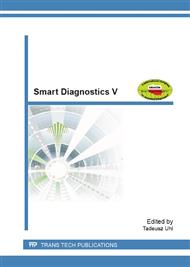p.257
p.266
p.276
p.281
p.290
p.302
p.310
p.318
p.333
The Rise and Fall of CBM (Condition Based Maintenance)
Abstract:
Aircraft and avionics, offshore, marine and other complex engineering systems often operate in harsh environmental and operational conditions and must meet stringent requirements of cost, reliability, safety and maintainability. To achieve these aims modern design management and a vast array of computer aided techniques are applied during the design and testing stages. Maintainability requirements, long ignored by designers and manufacturers, assumed great importance and forced rethinking of the way the design of new systems and their maintenance should be carried out. One of the technologies to deal with this problem is Condition Based Maintenance (CBM) which is used widely in various industries to reduce risk and improve system availability. CBM is based on detection and diagnosis of failures, assessing effects of such failures on life of the system health and prescribing maintenance actions to extend system life. However, the experience with CBM shows that high expectation of reduced costs, improve maintainability etc. are often not met, and the major reasons for it are problems with risk identification (what failures can be expected) and detection (what sensors to select). The paper reviews these problems and other barriers to effectiveness of CBM and presents model-based approach to risk identification which can lead to improved CBM.
Info:
Periodical:
Pages:
290-301
Citation:
Online since:
October 2013
Authors:
Price:
Сopyright:
© 2014 Trans Tech Publications Ltd. All Rights Reserved
Share:
Citation:


